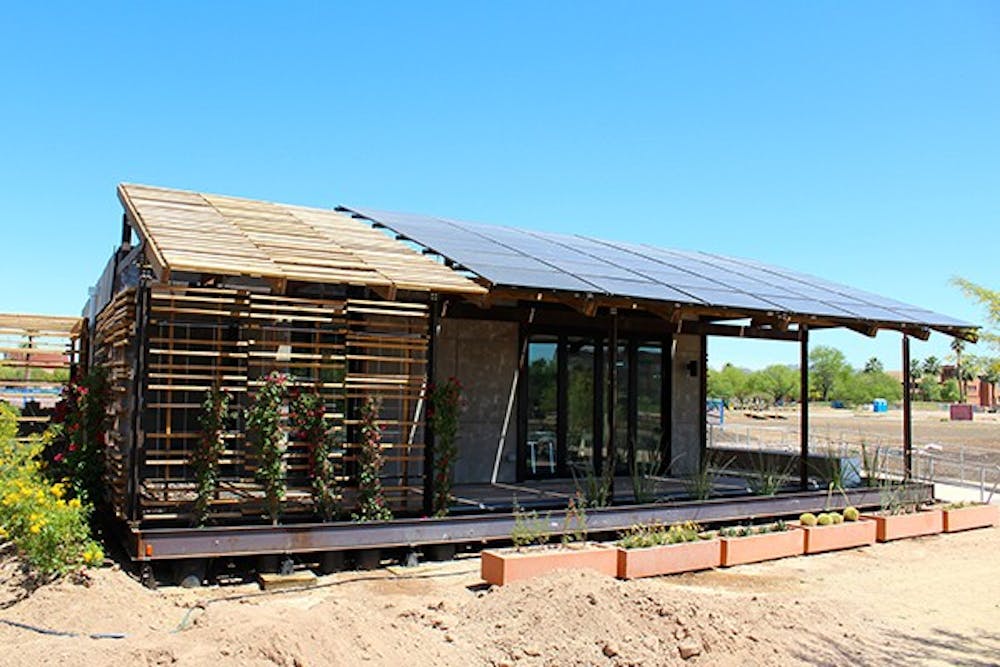 AORA Solar Tulip System in Almeria, Spain. (Photo Courtesy of AORA Solar)
AORA Solar Tulip System in Almeria, Spain. (Photo Courtesy of AORA Solar)In just a few months, Tempe residents will notice construction of a tall tulip-shaped structure near the Tempe golf course.
This unusual construction is not just for show. Next fall, it will be the main power source of several buildings surrounding it.
ASU has collaborated with AORA, a company that focuses on solar power generation, to develop a Solar Tulip. The 110-foot structure is a tower that mimics the shape of a tulip. It uses mirrors to heat air and power a turbine to generate electricity. Construction will begin in April.
The Solar Tulip will be the first of its kind in the U.S. There are two others located in Israel and Spain.
Associate Vice President for University Business Services John Riley said it is capable of generating electricity with heated air even after sundown and uses natural gas to power the turbine.
Riley is in charge of facilitating instruction and guidance for the ASU School of Sustainability. Technology like the Solar Tulip is the type of initiative with which the school strives to work.
“I believe our research interest is to explore how this system can be more efficient, and use heated air longer,” he said.
The project is part of the LightWorks initiative which is supported by ASU’s Office of Enterprise Development.
LightWorks puts together light-inspired research under one specific framework. It focuses primarily on renewable energy fields such as artificial photosynthesis, biofuels and next-generation photovoltaics.
The problem with solar technology is that it can’t store energy efficiently, so when the sun goes out, so does the electricity. The Solar Tulip tries to eliminate that problem.
Ellen Stechel, deputy director of LightWorks, said if the sun is shining bright, that’s all that is needed.
“At night it gets a boost by combusting fuel such as natural gas or biogas,” she said. “If it’s not hot enough, it will combust fuel to feed more heat into the air,”
By converting the sunlight into heat, it becomes a very powerful energy source.
ASU will be working with AORA to conduct research on how to make the device more efficient.
“Our role at ASU will not be developing the technology but researching,” Stechel said. “We will be working with the company and faculty at ASU to build a research program to educate students. I’m very excited about the role students will play in this project.”
Students who are part of the program will be advancing the research of the technology as well as additional inventions. They will be figuring out how to increase efficiency and reliability as well as making it cost competitive in the U.S.
“We just signed a contract with AORA last week,” Stechel said. “Everything is still in the definition stage, but the research program will begin on July 1."
LightWorks communications specialist Sarah Mason said this project is an exciting opportunity for ASU to work with AORA and bring the Solar Tulip to Tempe.
“At LightWorks we see an urgent need to confront global energy challenges and the research collaboration between ASU and AORA illustrates the way we can unite industry and academia to create meaningful impact in new energy technology, advanced research and industry engagement for a more sustainable energy future,” she said.
Reach the reporter at kgrega@asu.edu or follow her on twitter @kelciegrega




